Design and Experimental Research of Robot Finger Sliding Tactile Sensor Based on FBG
Abstract
1. Introduction
2. FBG Pressure Tactile Sensing Principle
3. Design of FBG Sliding Tactile Sensing Array for Robot Finger
3.1. Simulation and Experimental Analysis of Embedded Depth of Sensing Array Grating Based on Tactile Sensing
3.2. Simulation and Experimental Analysis of Fiber Grating Sensing Array Structure Based on Sliding Perception
3.2.1. Experimental Analysis of Dynamic Detection of Embedding Depth
3.2.2. Experimental Analysis of Angle Comparison of Cross-Sensitive Units of Sensing Array Structure
3.3. Structural Design and Experimental Analysis of Double-Layer Sliding Tactile Sensor Array
4. Experiment and Analysis of Robot Finger Sliding Tactile Sensing Based on FBG
4.1. Fabrication of FBG Sliding Tactile Sensor
4.2. Sensing Array Calibration Experiment
- (1)
- Linearity experiment and analysis
- (2)
- Repeatability experiment and analysis
- (3)
- Creep experiment and analysis
- (4)
- Directional calibration experiment and analysis
- (5)
- Temperature calibration experiment and compensation analysis
4.3. Experiment and Analysis of Robot Finger Grasping Perception
- (1)
- Experiment and analysis of static grasp perception of robot fingers
- (2)
- Experiment and analysis of robot finger dynamic grasping and sliding.
5. Conclusions
- (1)
- The designed sensor has good linearity and repeatability, and the experimental results agree with the simulation results. The sensitivity can reach up to 14.5 pm/N, and the response to external load is good; the coincidence degree of loading characteristic curve is high, the deviations are all controlled within 5 pm, and the overall change tends to be linear.
- (2)
- The sensor has good creep resistance characteristic, the wavelength changes stably around the zero scale, and the overall deviation is controlled within 20 pm.
- (3)
- In the robot finger grasping experiment, the sliding tactile sensor has a high fit with the robot finger, and its structure is relatively stable, which shows the feasibility of applying it to the sliding tactile sensor detection of the robot finger surface.
- (4)
- In the robot finger dynamic sliding experiment, the sliding tactile sensing array can effectively sense the sliding signal and meet the needs of dynamic detection.
Author Contributions
Funding
Institutional Review Board Statement
Informed Consent Statement
Data Availability Statement
Conflicts of Interest
References
- Jiang, C.; Zhang, Z.; Pan, J. Finger-Skin-Inspired Flexible Optical Sensor for Force Sensing and Slip Detection in Robotic Grasping. Adv. Mater. Technol. 2021, 6, 2100285. [Google Scholar] [CrossRef]
- Muthusamy, R.; Huang, X.; Zweiri, Y. Neuromorphic event-based slip detection and suppression in robotic grasping and manipulation. IEEE Access 2020, 8, 153364–153384. [Google Scholar] [CrossRef]
- Massalim, Y.; Kappassov, Z.; Varol, H. Deep vibro-tactile perception for simultaneous texture identification, slip detection, and speed estimation. Sensors 2020, 20, 4121. [Google Scholar] [CrossRef]
- Veiga, F.; Edin, B.; Peters, J. Grip stabilization through independent finger tactile feedback control. Sensors 2020, 20, 1748. [Google Scholar] [CrossRef]
- Kim, S.; Hwang, D.; Moon, H. Development of a resistive compact slip sensor using dielectric elastomer. Microsyst. Technol. 2017, 23, 5163–5169. [Google Scholar] [CrossRef]
- Li, T.; Luo, H.; Qin, L. Flexible capacitive tactile sensor based on micropatterned dielectric layer. Small 2016, 12, 5042–5048. [Google Scholar] [CrossRef] [PubMed]
- Tang, Z.; Jia, S.; Wang, F. Highly stretchable core–sheath fibers via wet-spinning for wearable strain sensors. ACS Appl. Mater. Interfaces 2018, 10, 6624–6635. [Google Scholar] [CrossRef]
- Hu, K.; Yao, Z.; Wu, Y. Application of FBG Sensor to Safety Monitoring of Mine Shaft Lining Structure. Sensors 2022, 22, 4838. [Google Scholar] [CrossRef]
- Amaya, A.; Sierra-Pérez, J. Toward a Structural Health Monitoring Methodology for Concrete Structures under Dynamic Loads Using Embedded FBG Sensors and Strain Mapping Techniques. Sensors 2022, 22, 4569. [Google Scholar] [CrossRef]
- Leal-Junior, A.; Marques, C.; Frizera, A. Diaphragm-assisted impact amplitude and localization measurement system with FBG sensors. Opt. Fiber Technol. 2022, 70, 102854. [Google Scholar] [CrossRef]
- Wang, L.; Li, J.; Hao, J. Crack width estimate in reinforced concrete with FBG sensor: Experimental and numerical analysis. Optoelectron. Lett. 2022, 18, 43–47. [Google Scholar] [CrossRef]
- Khadka, S.; Predecki, P.; Kumosa, M. Monitoring solidification of tin-bismuth alloys using FBG sensors. Materialia 2022, 21, 101320. [Google Scholar] [CrossRef]
- Kaur, G.; Kaler, R. Investigate the optical FBG sensor to monitor displacement and vibration in civil structure. Opt. Quantum Electron. 2022, 54, 1–8. [Google Scholar] [CrossRef]
- Qi, Y.; Qian, M.; Yang, H. Flexible tactile sensor with 2D structure based on Fiber Bragg grating. SPIE 2021, 12057, 604–613. [Google Scholar]
- Li, C.; Tang, J.; Cheng, C. FBG arrays for quasi-distributed sensing: A review. Photonic Sens. 2021, 11, 91–108. [Google Scholar] [CrossRef]
- Hayle, S.; Manie, Y.; Dehnaw, A. Reliable self-healing FBG sensor network for improvement of multipoint strain sensing. Opt. Commun. 2021, 499, 127286. [Google Scholar] [CrossRef]
- Qian, M.; Yu, Y.; Ren, N. Sliding sensor using fiber Bragg grating for mechanical fingers. Opt. Express. 2018, 26, 254–264. [Google Scholar] [CrossRef]
- Feng, J.; Jiang, Q. Slip and Roughness Detection of Robotic Fingertip Based on FBG. Sens. Actuators Phys. 2019, 287, 143–149. [Google Scholar] [CrossRef]
- Sun, S.; He, S.; Han, Y. Soft Bionic Skin With Touch-Slip and Thermal Perception Using Double-Layer Distributed FBG Sensing Array. IEEE Sens. J. 2022, 22, 4096–4105. [Google Scholar] [CrossRef]
- Qin, W.; Jiang, Q.; Wei, G. A two-range tactile sensor integrated in three layer elastomer based on FBG. Smart Mater. Struct. 2021, 30, 065011. [Google Scholar] [CrossRef]
- Mansor, N.; Ibrahim, R. Temperature sensitivity of FBG coating with zinc oxide and silicon carbide. J. Phys. Conf. Ser. 2021, 1892, 012033. [Google Scholar] [CrossRef]
- Yang, T.; Chen, P.; Han, J. Wavelet transform analysis of optic fiber force sensing signals at puncture needle tip. Opt. Precis. Eng. 2015, 23, 2149–2157. [Google Scholar] [CrossRef]
- Huang, L.; Ding, Z.; Zeng, J. Optimization of the coupled cooling circuit in electromagnetic forming with finite element analysis. Int. J. Adv. Manuf. Technol. 2021, 116, 2211–2221. [Google Scholar] [CrossRef]
- Qian, M.; Yu, Y.; Li, H. Research on tactile and sliding sensing of the mechanical finger based on the fiber Bragg grating. Chin. J. Sci. Instrum. 2016, 37, 730–736. [Google Scholar]

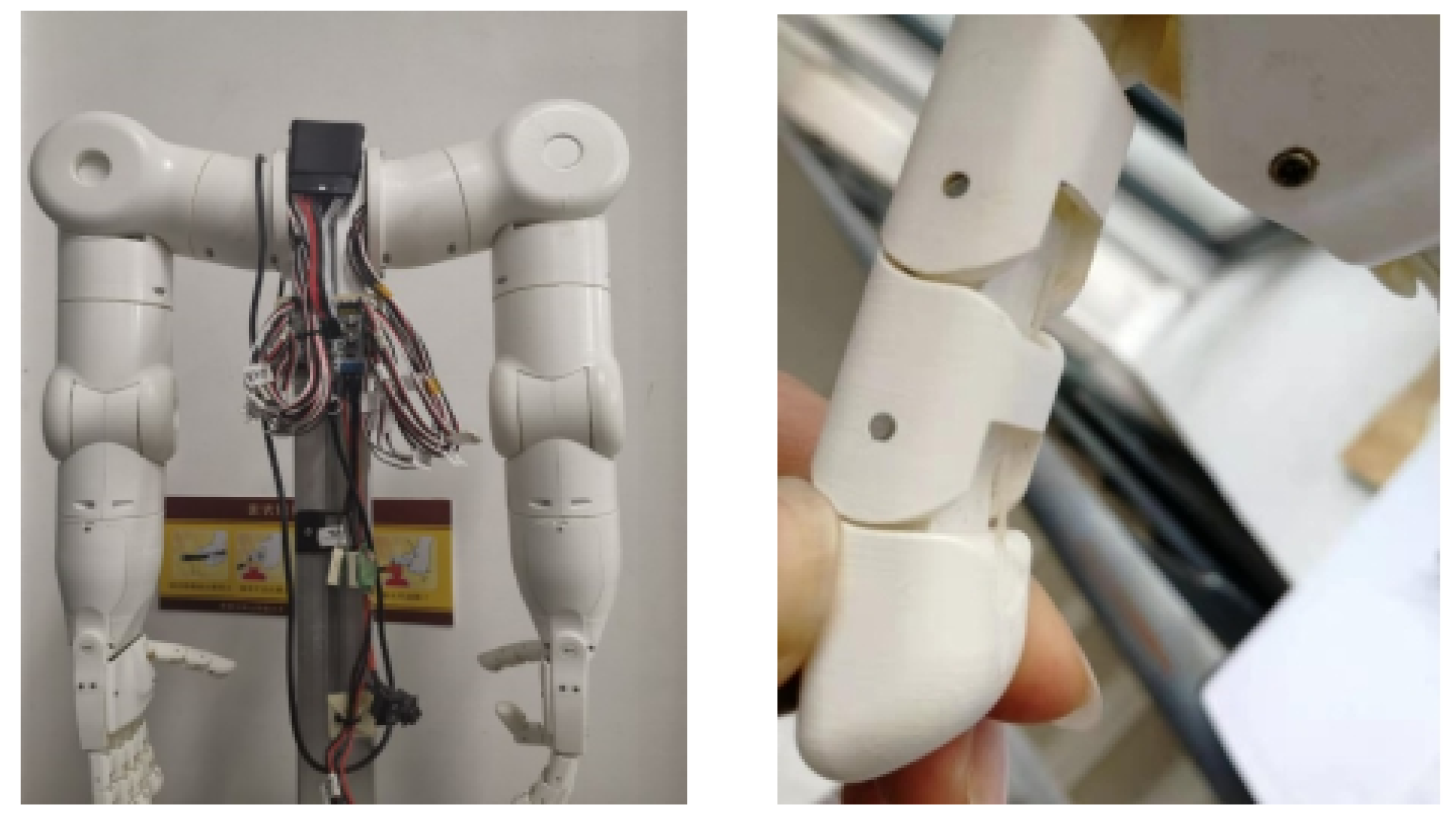
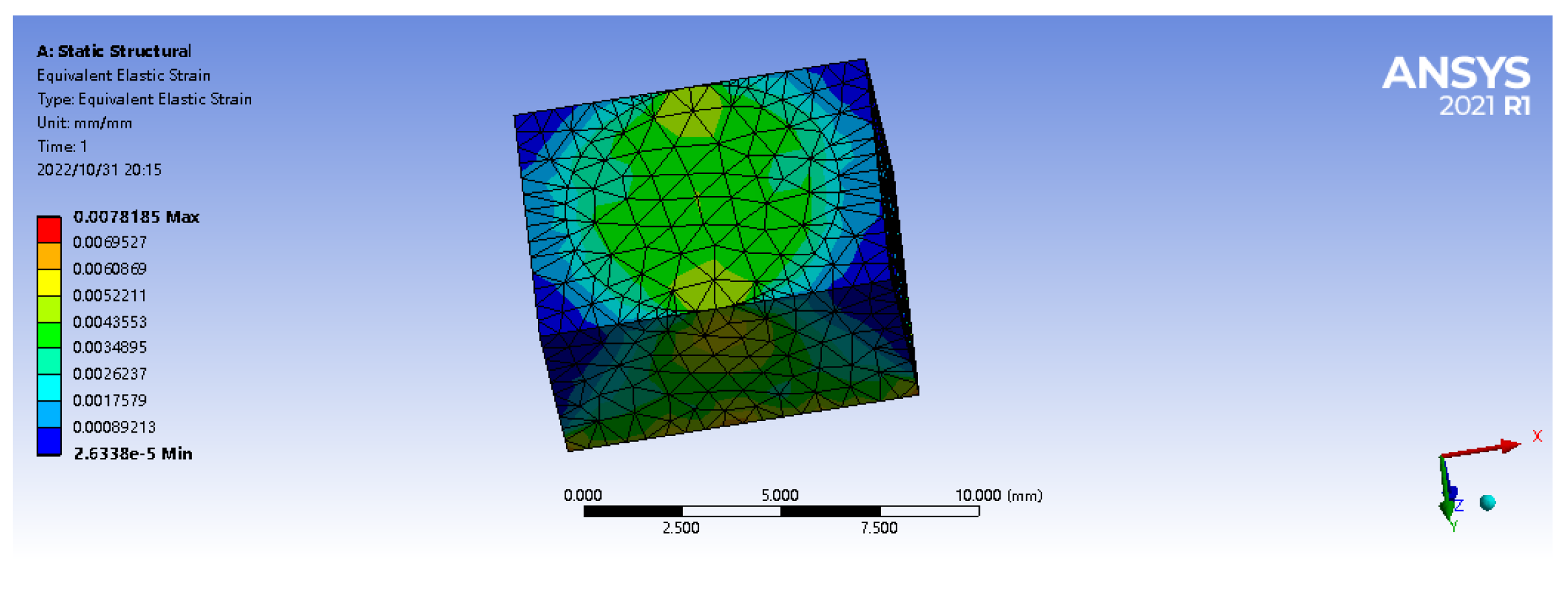


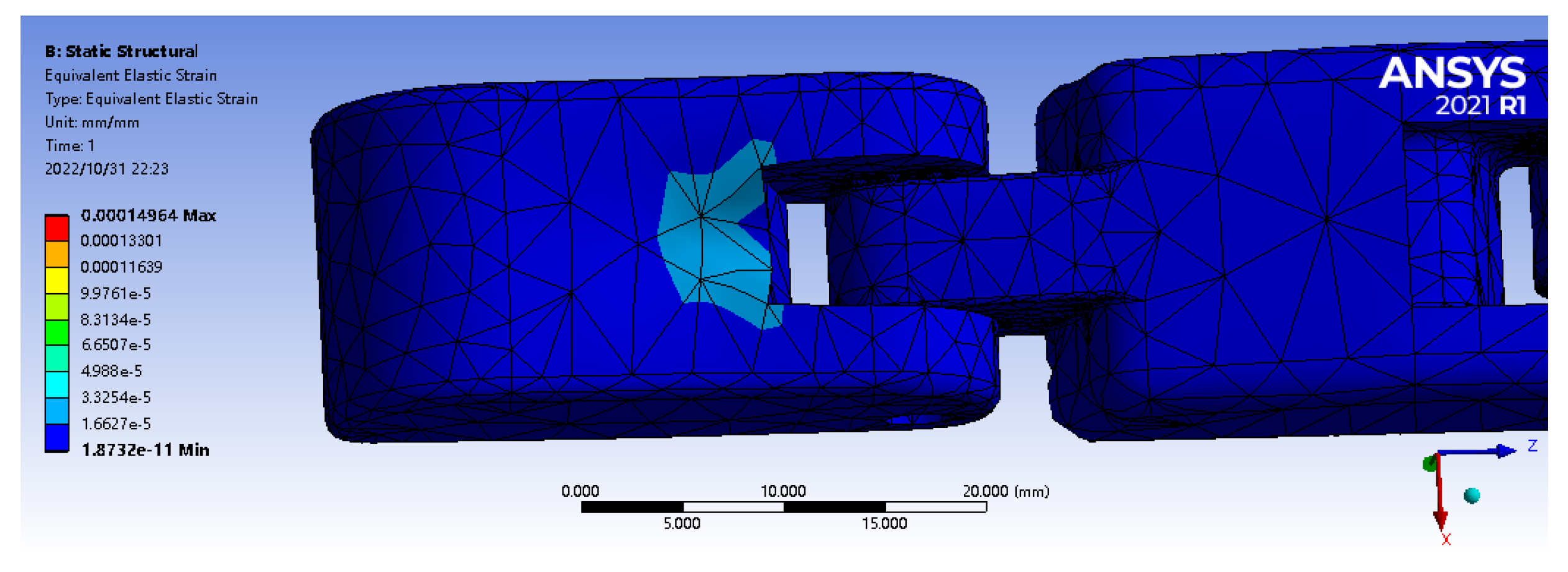
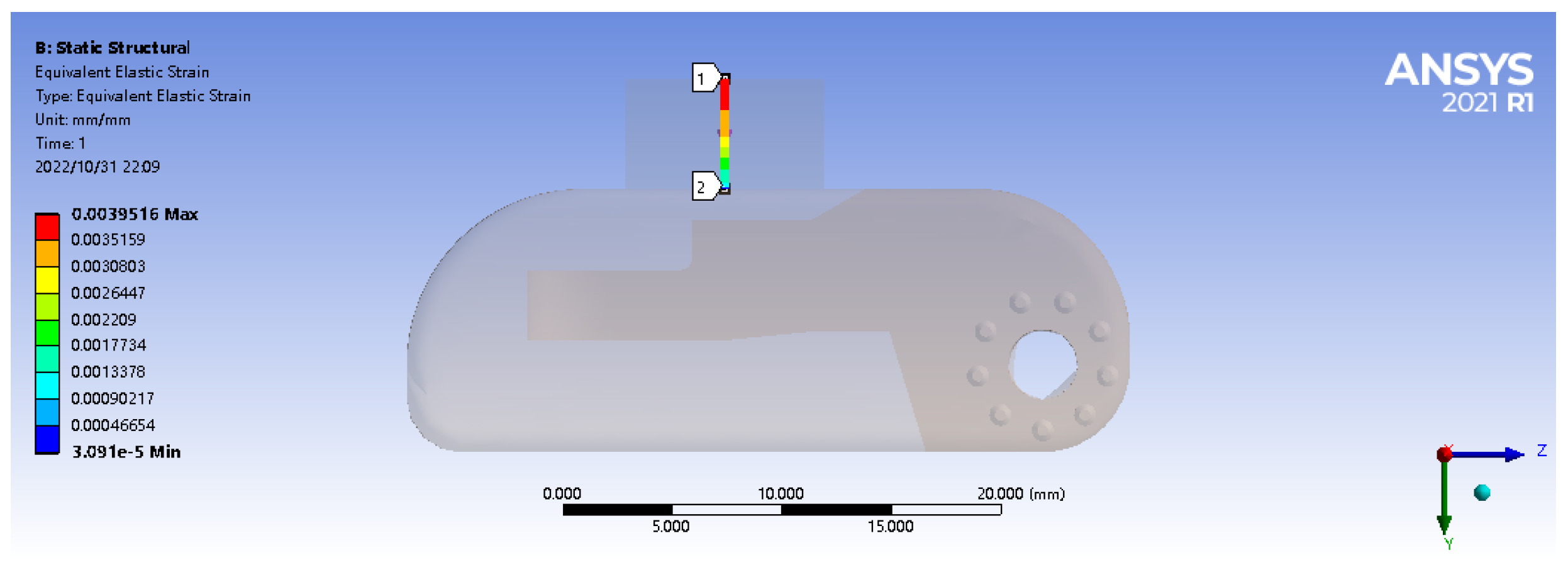
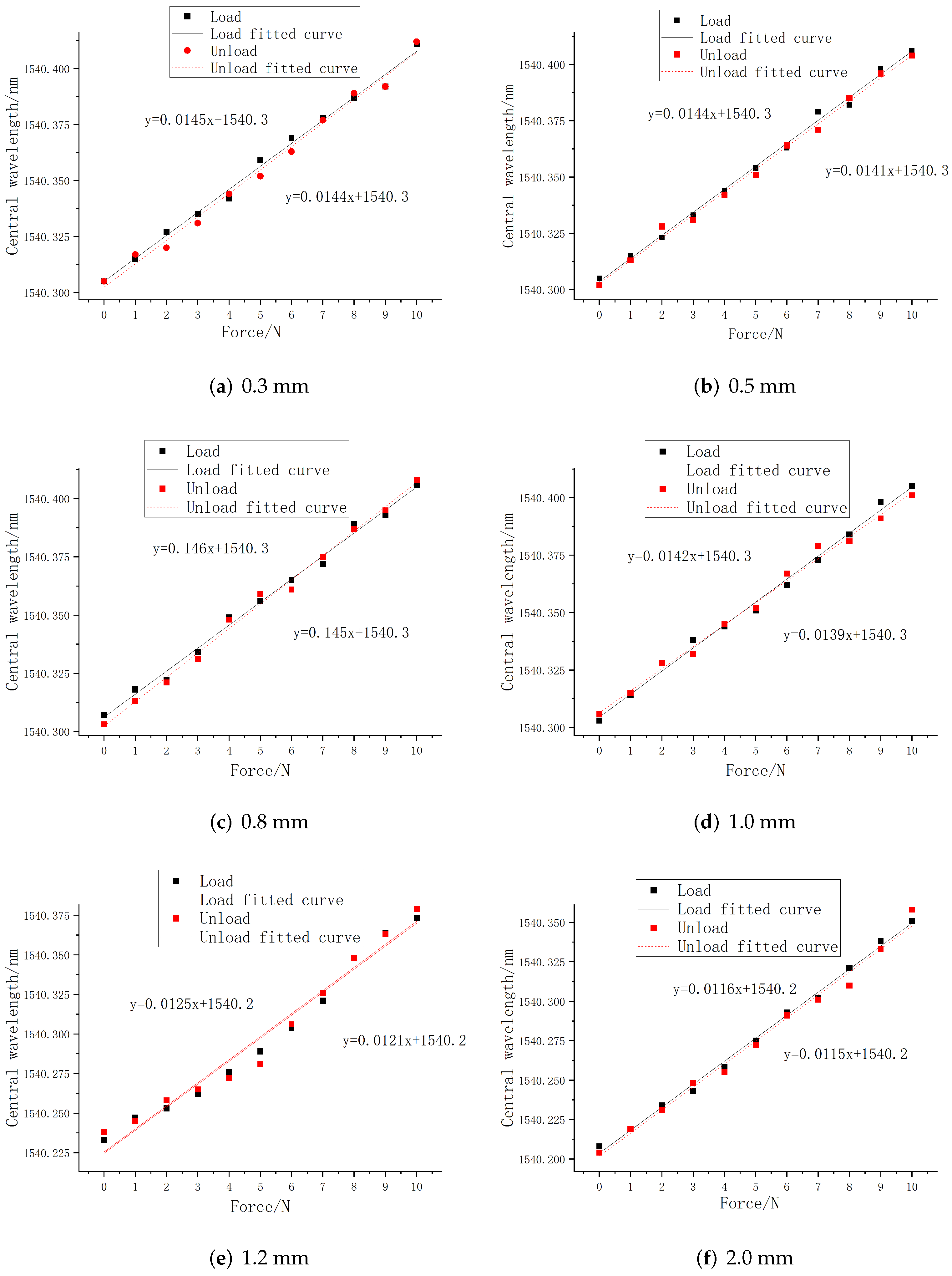

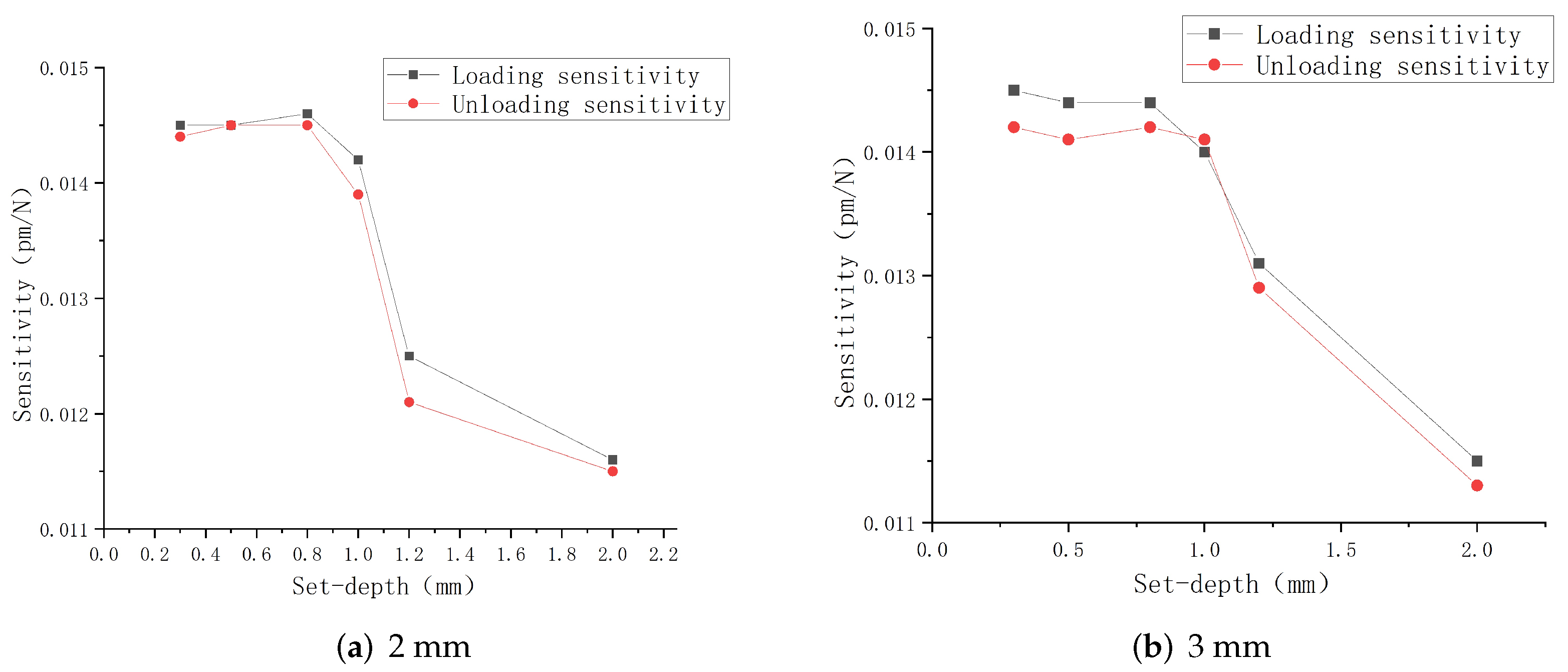
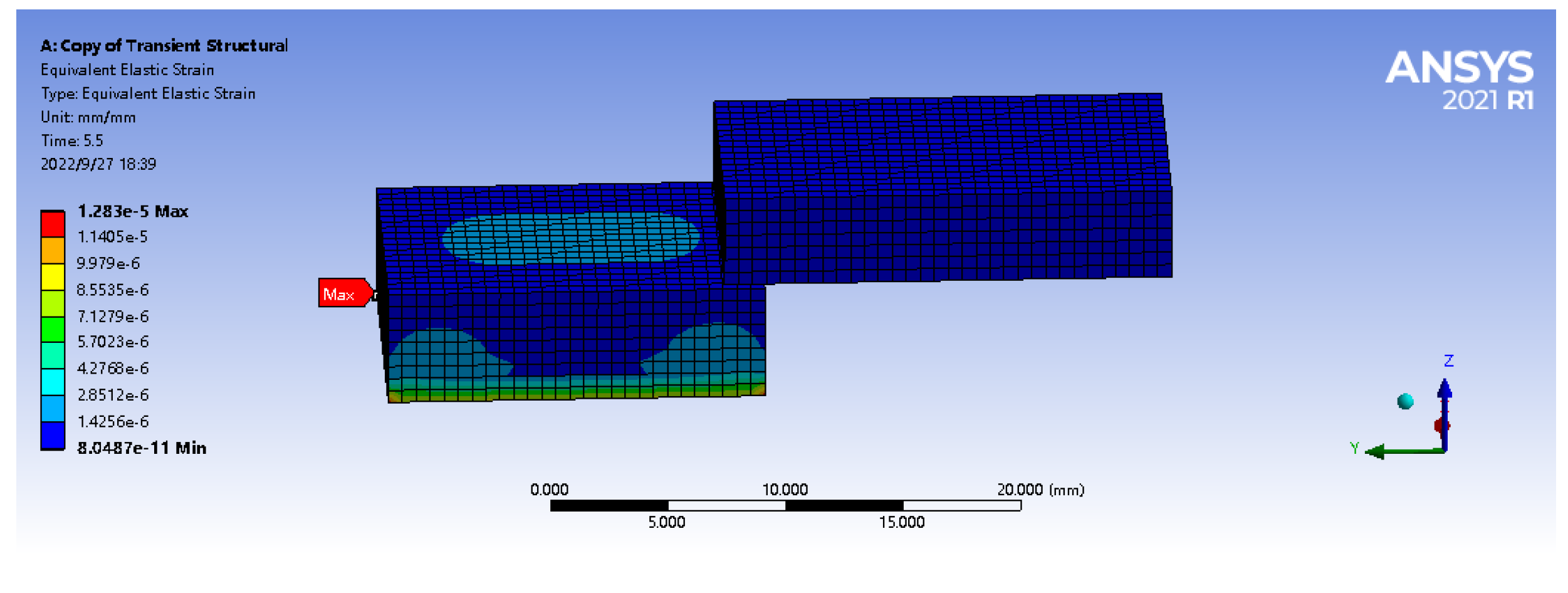
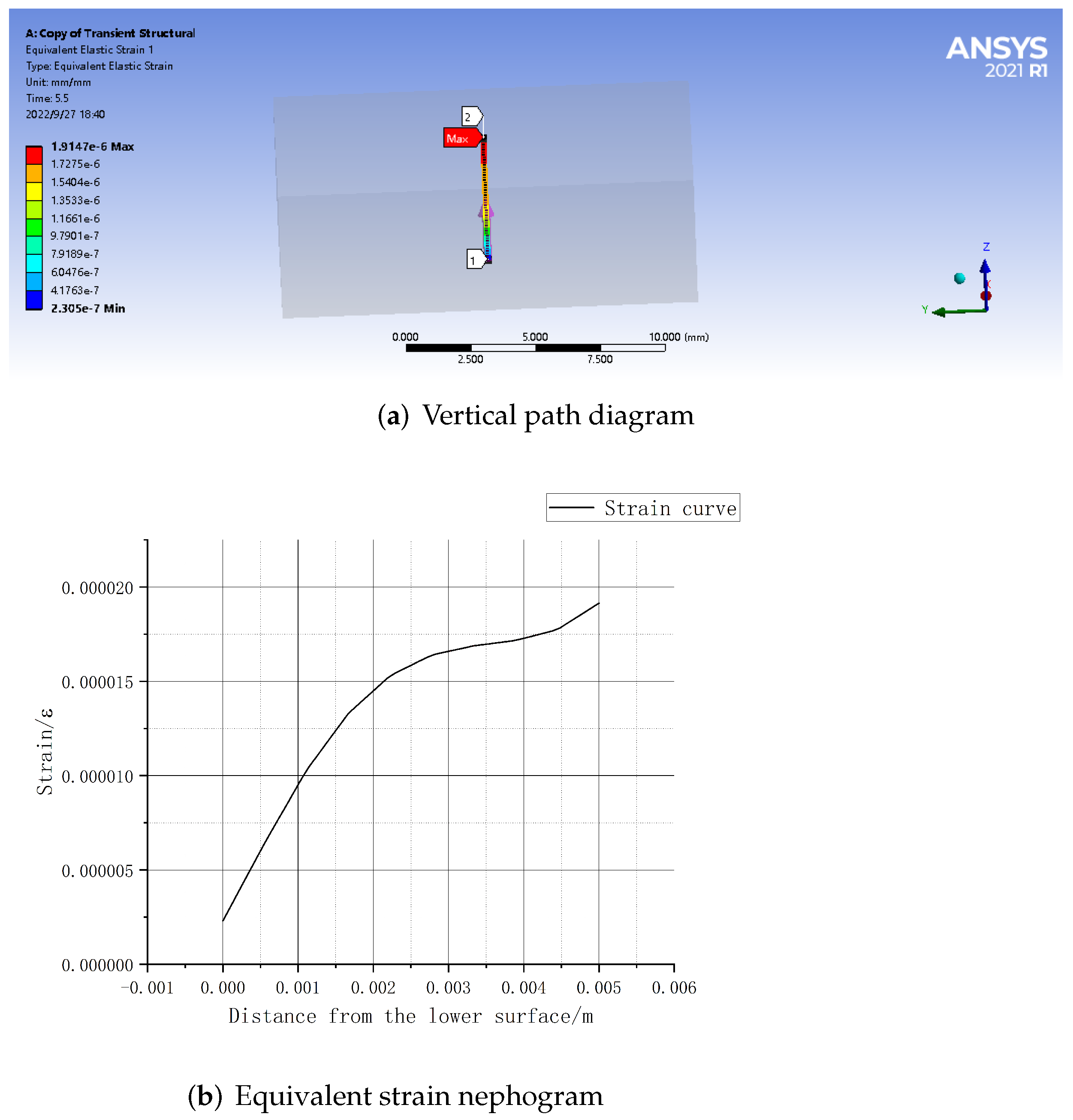
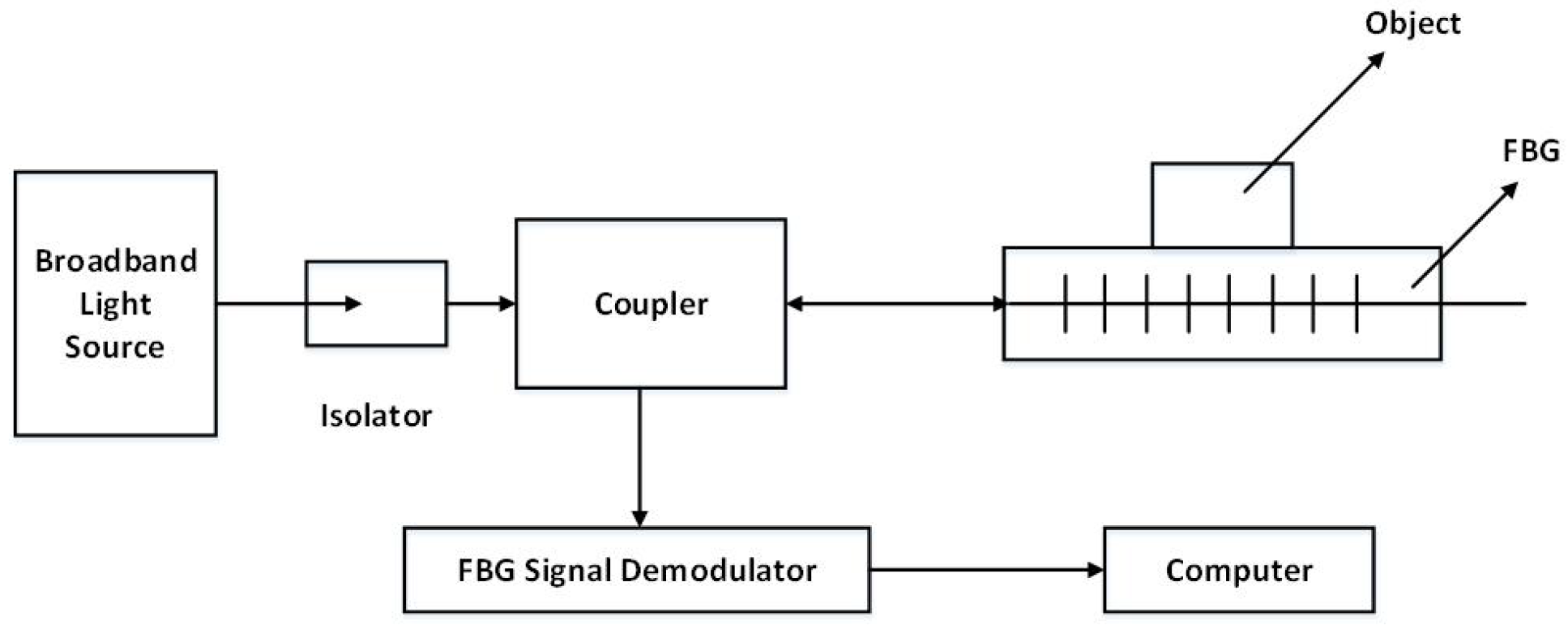
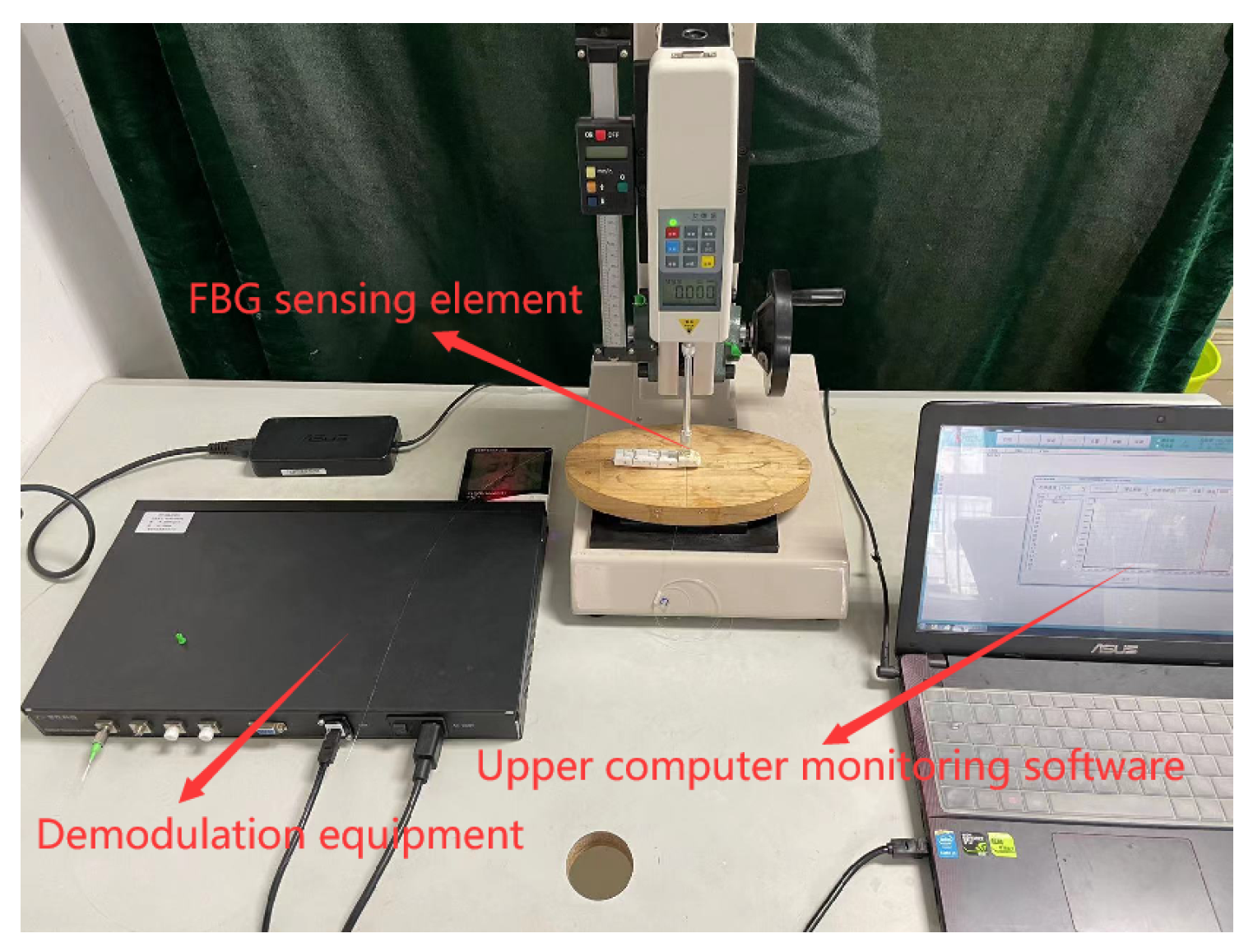

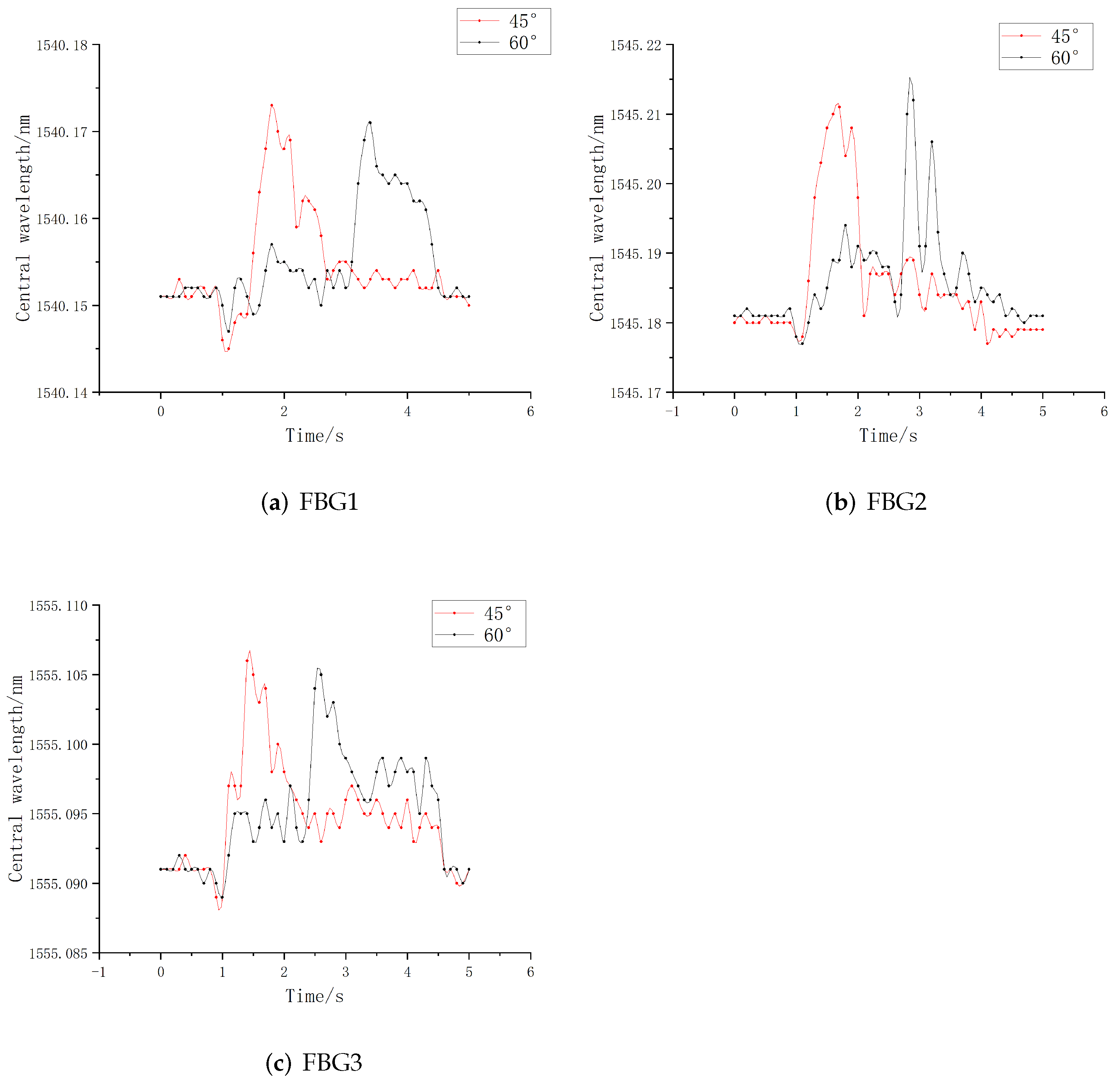
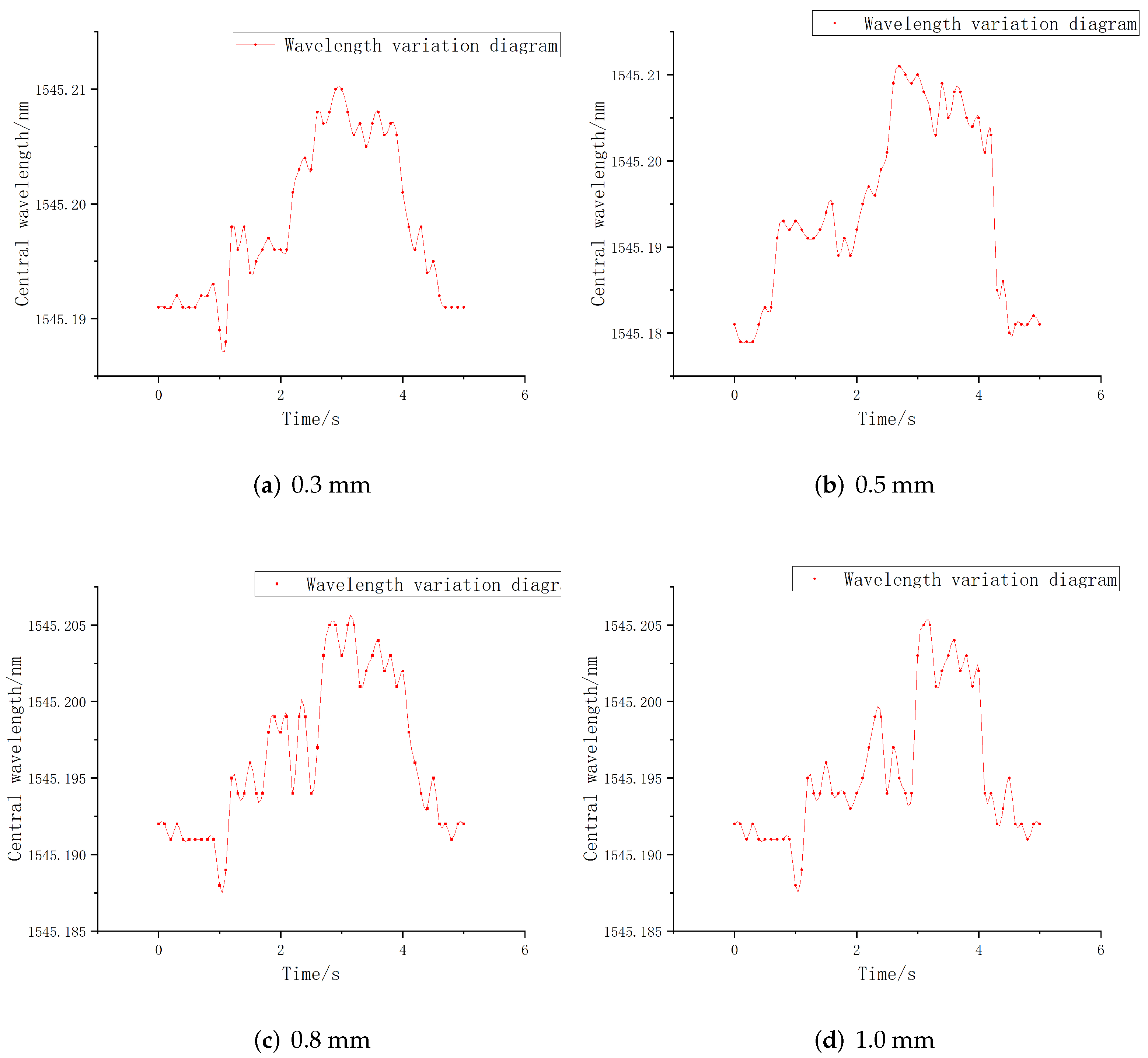

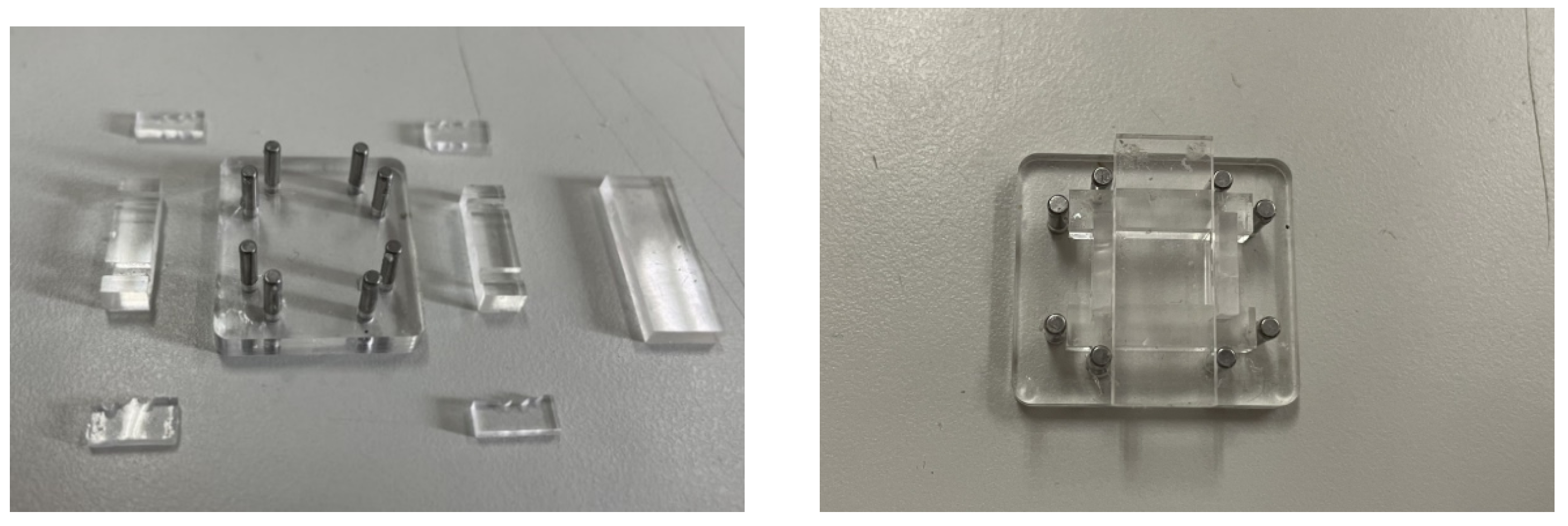
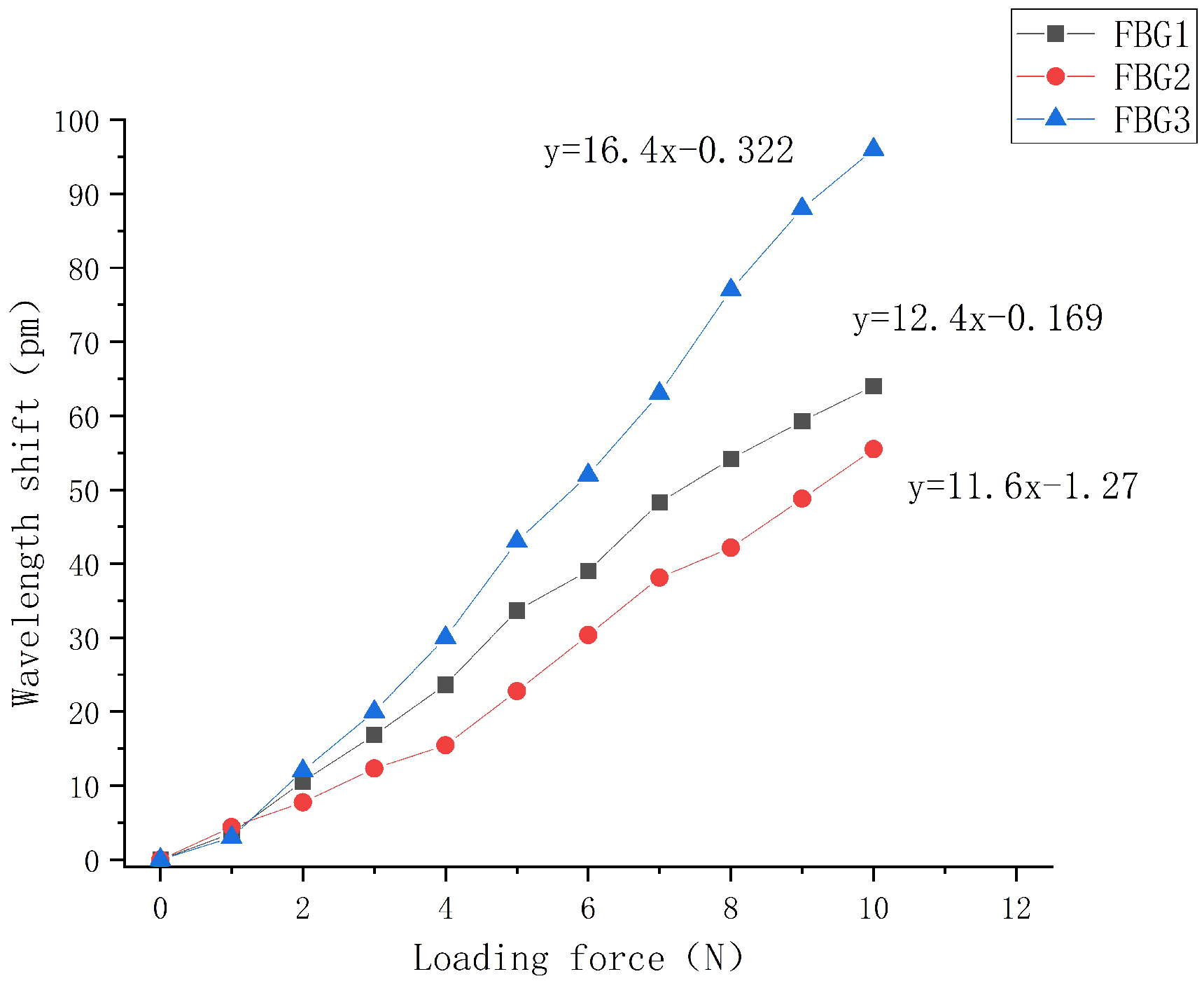

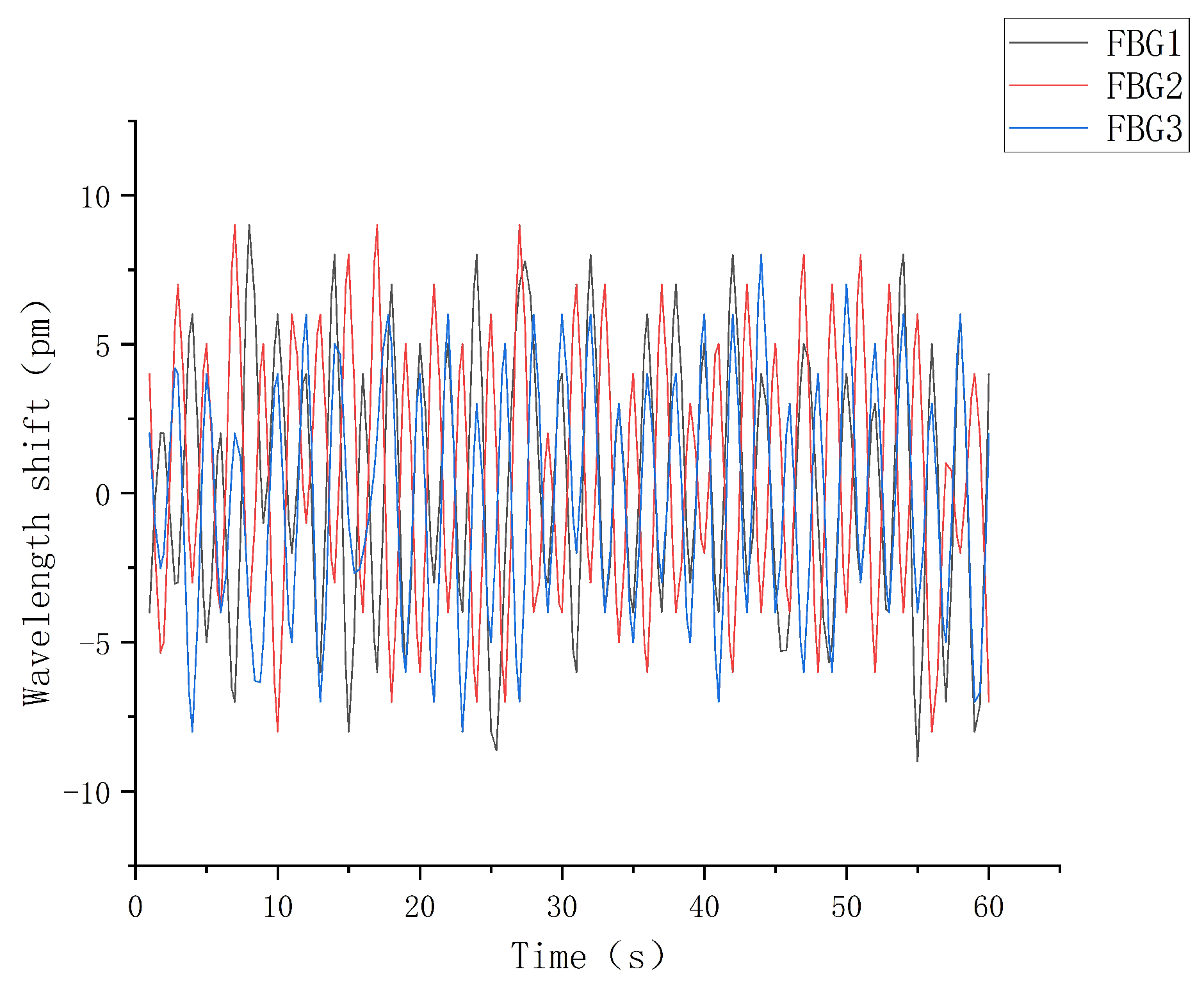
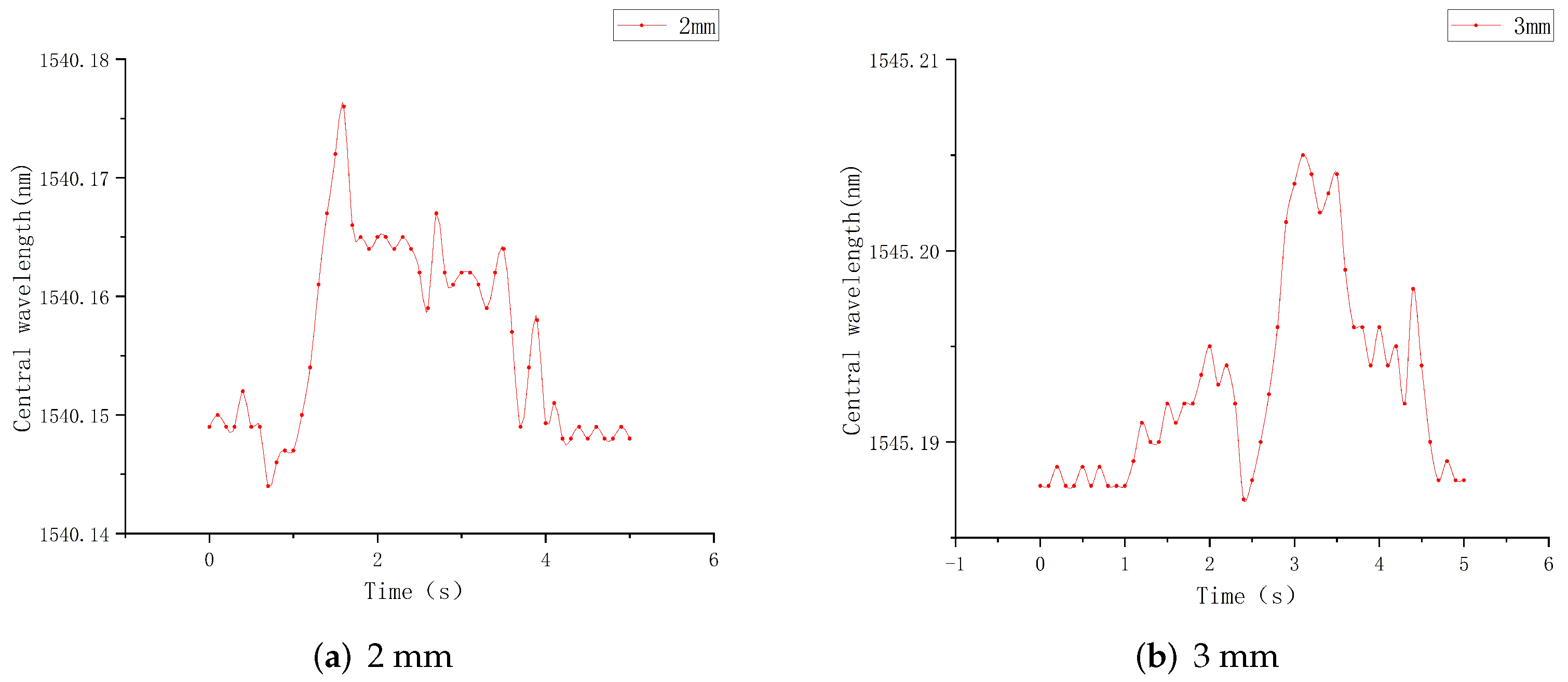

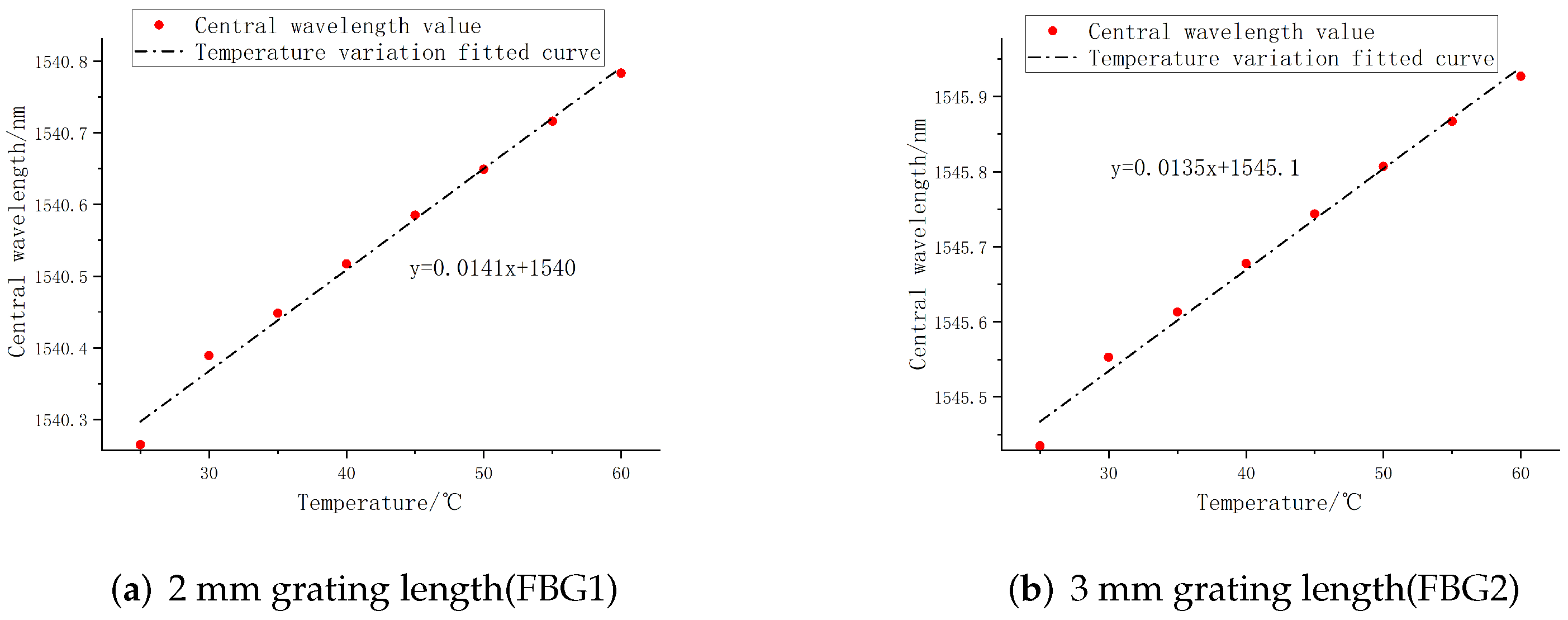
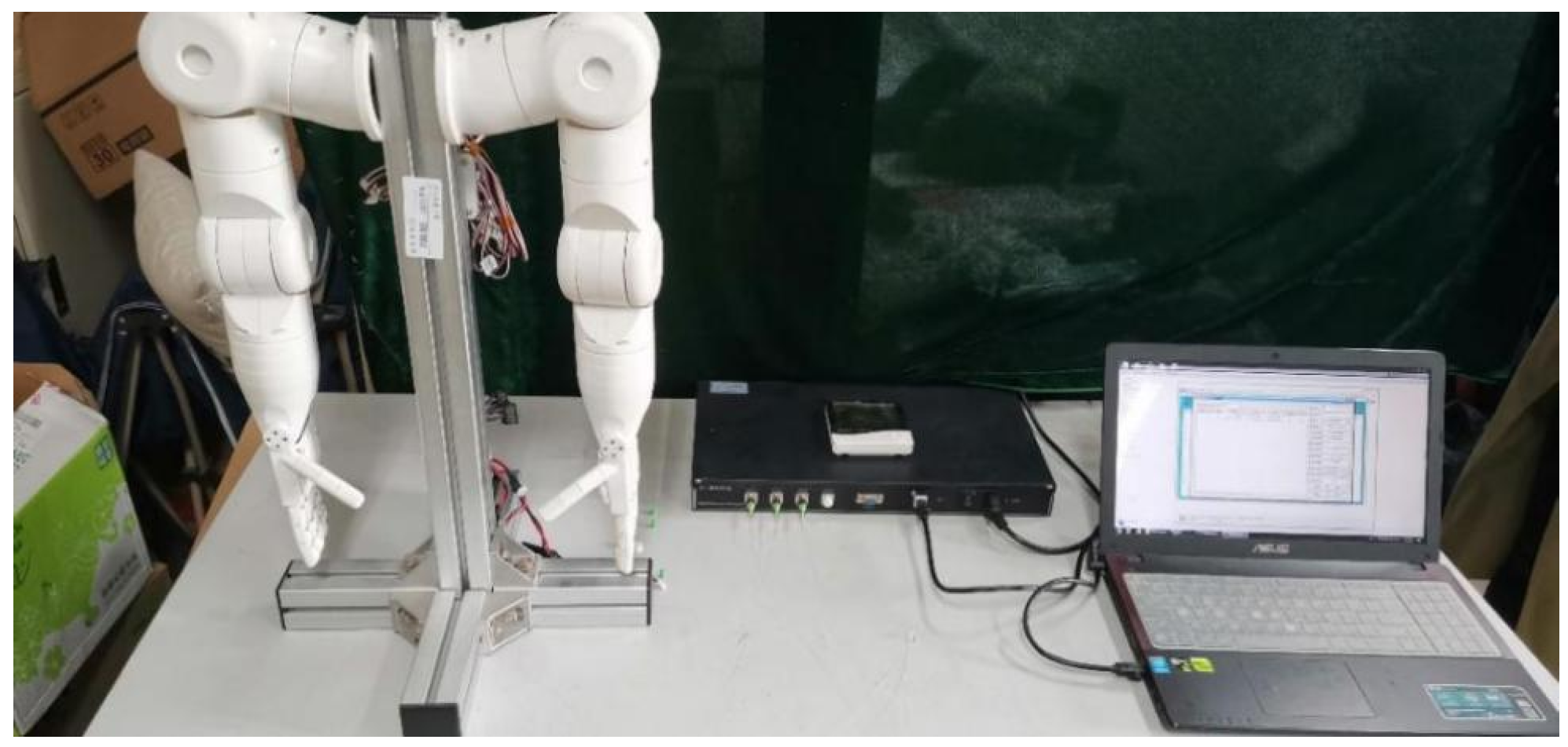

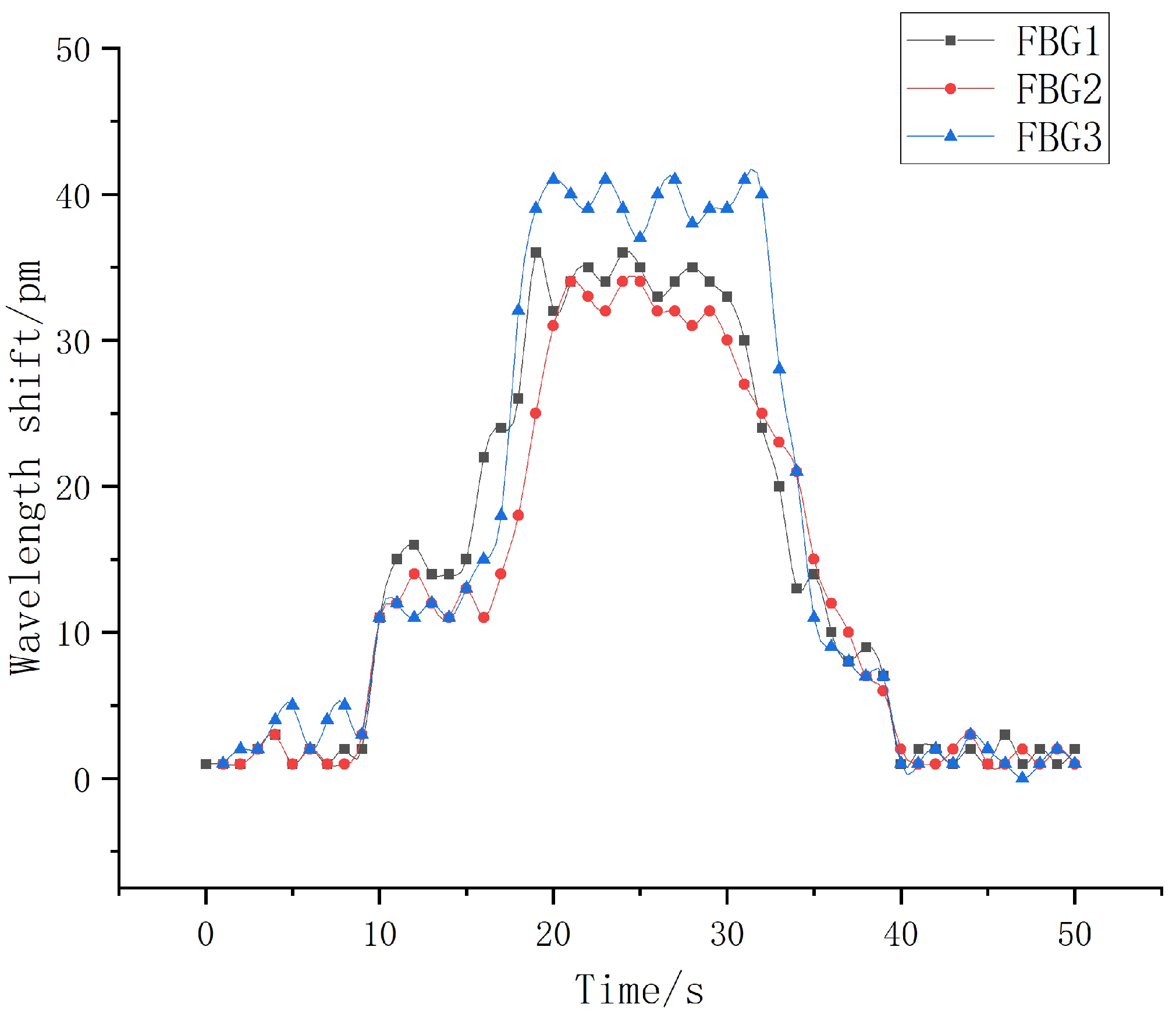


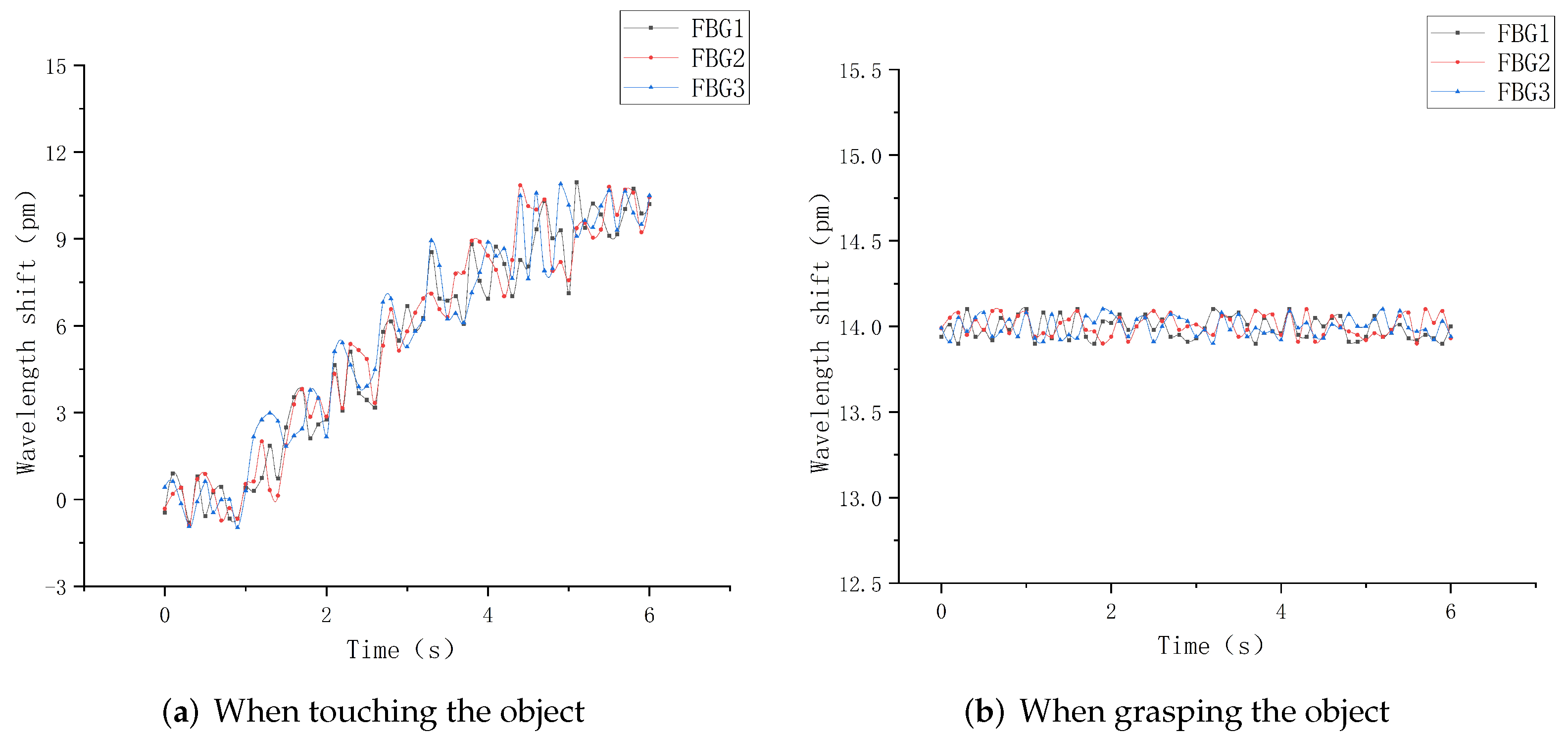
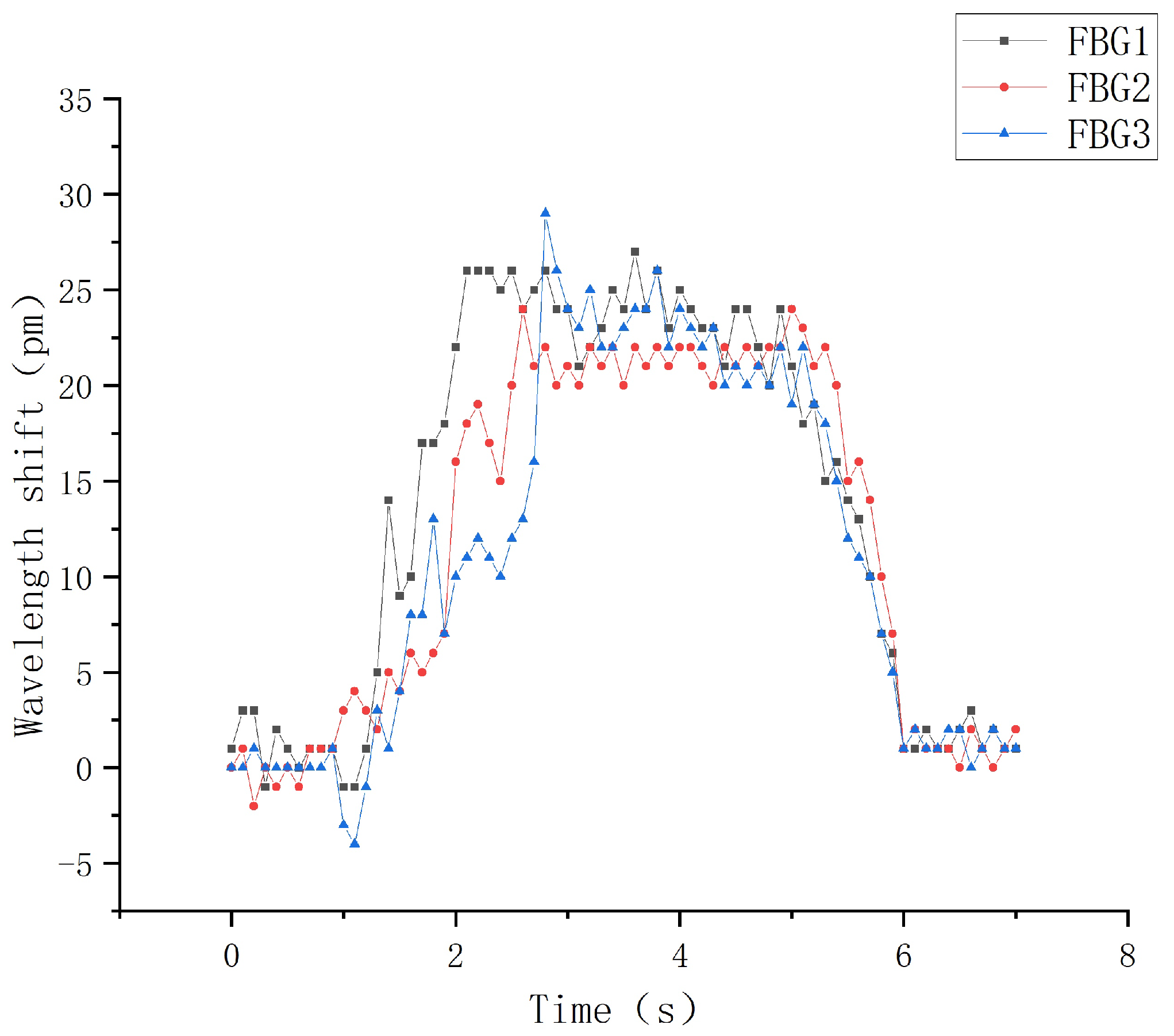
| Number | Central Wavelength/nm | Grating Length/mm |
|---|---|---|
| 1 | 1540.12 | 2 mm |
| 2 | 1545.40 | 3 mm |
| 3 | 1555.04 | 5 mm |
| Embedded Depth/mm | Goodness-of-Fit of FBG1 | Goodness-of-Fit of FBG2 |
|---|---|---|
| 0.3 | 0.9915 | 0.9820 |
| 0.5 | 0.9950 | 0.9955 |
| 0.8 | 0.9935 | 0.9925 |
| 1.0 | 0.9935 | 0.9830 |
| 1.2 | 0.9815 | 0.9870 |
| 2.0 | 0.9925 | 0.9905 |
Publisher’s Note: MDPI stays neutral with regard to jurisdictional claims in published maps and institutional affiliations. |
© 2022 by the authors. Licensee MDPI, Basel, Switzerland. This article is an open access article distributed under the terms and conditions of the Creative Commons Attribution (CC BY) license (https://creativecommons.org/licenses/by/4.0/).
Share and Cite
Lu, G.; Fu, S.; Xu, Y. Design and Experimental Research of Robot Finger Sliding Tactile Sensor Based on FBG. Sensors 2022, 22, 8390. https://doi.org/10.3390/s22218390
Lu G, Fu S, Xu Y. Design and Experimental Research of Robot Finger Sliding Tactile Sensor Based on FBG. Sensors. 2022; 22(21):8390. https://doi.org/10.3390/s22218390
Chicago/Turabian StyleLu, Guan, Shiwen Fu, and Yiming Xu. 2022. "Design and Experimental Research of Robot Finger Sliding Tactile Sensor Based on FBG" Sensors 22, no. 21: 8390. https://doi.org/10.3390/s22218390
APA StyleLu, G., Fu, S., & Xu, Y. (2022). Design and Experimental Research of Robot Finger Sliding Tactile Sensor Based on FBG. Sensors, 22(21), 8390. https://doi.org/10.3390/s22218390






